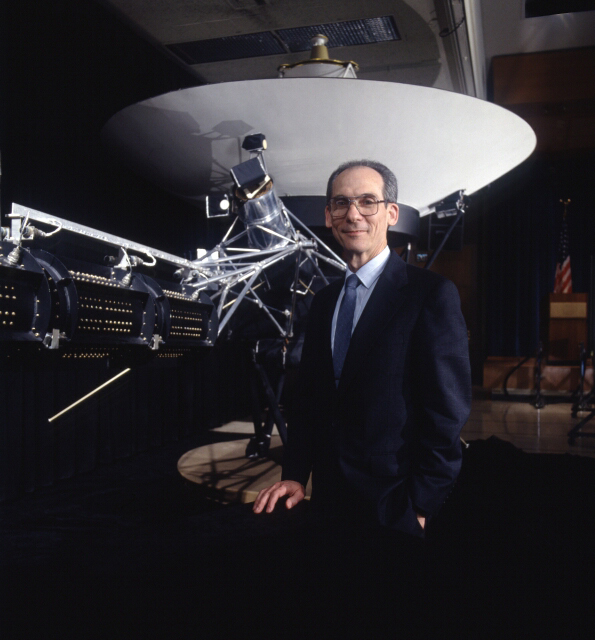

Cosmox Blogs
Voyager 1: The Vasco Da Gama of Interstellar Travel
We all have read about Christopher Columbus and the good old Vasco Da Gama who explored the Earth, discovered numerous countries and were the pioneers of adventure and voyage, who inspired millions but when it comes to interstellar travel there is one whose voyage is unprecedented in human history. The only object created by humanity to go beyond the solar system and is the farthest object from humanity at a distance of 24.3 billion km from earth.
Inventing the Voyager 1
In the 1960s a proposal for a grand tour to study outer planets of the solar system led NASA to start a project in the 1970s and with the help of information gathered from pioneer 10 which studied Jupiter's atmosphere from a close range helped scientists and engineers design Voyager to better withstand the intense radiation around Jupiter. Voyager 1 was built by the Jet Propulsion Laboratory (JPL). It has 16 hydrazine thrusters, three-axis stabilization gyroscopes, and referencing instruments to keep the probe's radio antenna pointed toward Earth.
Communication System:
Voyager 1 was going to explore outer space so the radio communication system of Voyager 1 was designed to be used up to and beyond the solar system, in the deep space network. It has a 3.7-metre (12 ft) diameter high-gain Cassegrain antenna to send and receive radio waves via the three Deep Space Network stations on the Earth. The spacecraft normally transmits data to Earth over Deep Space Network Channel 18, using a frequency of either 2.3 GHz or 8.4 GHz, while signals from Earth to Voyager are transmitted at 2.1 GHz.
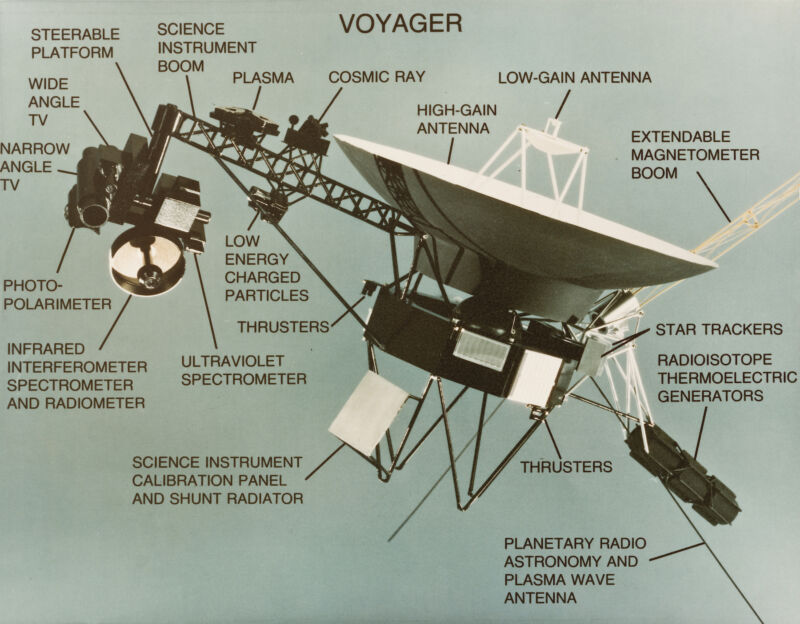
Computers:
There are three different computer types on the Voyager spacecraft, two of each kind, sometimes used for redundancy. They are proprietary, custom-built computers built from CMOS and TTL medium-scale CMOS integrated circuits and discrete components, mostly from the 7400 series of Texas Instruments.
Power Source
Voyager 1 required a very reliable power source on which it could run for decades and therefore the voyager 1 was powered by three radioisotope thermoelectric generators (RTG). Each Multihundred-Watt radioisotope thermoelectric generator (MHW RTG) contains 24 pressed plutonium 238 oxide spheres. Plutonium - 238 has a half life of 87.7 years so it is estimated to support some of voyager 1’s components at least till 2025. The RTGs generated about 470 W of electric power at the time of launch, with the remainder being dissipated as waste heat.
Trajectory
Voyager 1 had to have a very accurately calculated and precise trajectory since it had to successfully reach outer space all while studying planets.
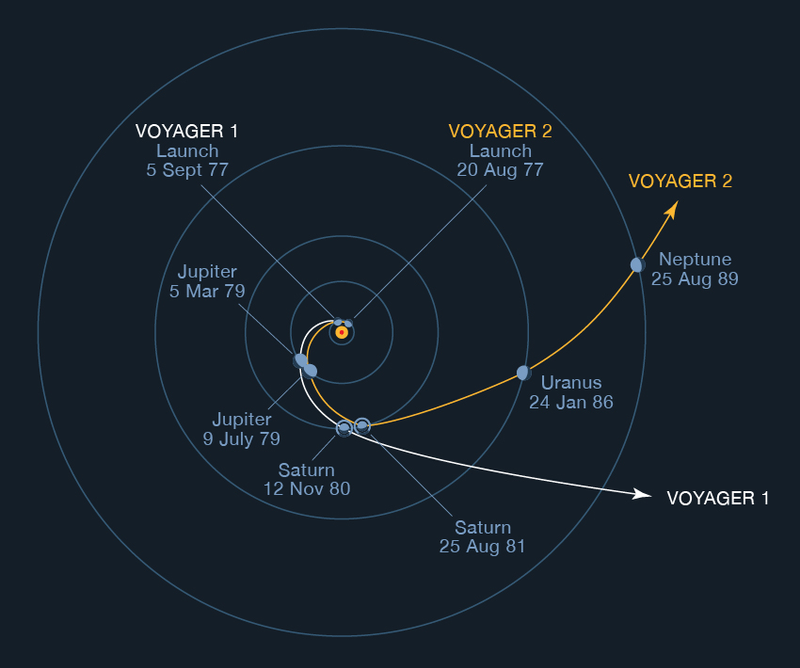
Launch
Voyager 1 was launched on September 5 1977 from Launch Complex 41 at the Cape Canaveral Air Force Station, aboard a Titan IIIE launch vehicle. The Voyager 2 probe had been launched two weeks earlier, on August 20, 1977. Despite being launched later, Voyager 1 reached both Jupiter and Saturn sooner, following a shorter trajectory. Voyager 1's launch almost failed because Titan's LR-91 second stage shut down prematurely, leaving 1,200 pounds (540 kg) of propellant unburned. Recognizing the deficiency, the Centaur stage's onboard computers ordered a burn that was far longer than planned in order to compensate. Centaur extended its own burn and was able to give Voyager 1 the additional velocity it needed. At cutoff, the Centaur was only 3.4 seconds from propellant exhaustion. If the same failure had occurred during Voyager 2's launch a few weeks earlier, the Centaur would have run out of propellant before the probe reached the correct trajectory. Jupiter was in a more favorable position vis-à-vis Earth during the launch of Voyager 1 than during the launch of Voyager 2.
Voyager 1's initial orbit had an aphelion of 8.9 AU (830 million mi), just a little short of Saturn's orbit of 9.5 AU (880 million mi). Voyager 2's initial orbit had an aphelion of 6.2 AU (580 million mi), well short of Saturn's orbit.
Flyby of Jupiter
After pioneer 10 the voyager 1 became one of the very few space probes to get close to and study jupiter. On March 5 1979 at a distance of about 349,000 kilometers (217,000 miles) from the planet's center. Voyager 1 studied the great red spot of Jupiter. Because of the greater photographic resolution allowed by a closer approach, most observations of the moons, rings, magnetic fields, and the radiation belt environment of the Jovian system were made during the 48-hour period that bracketed the closest approach. Voyager 1 finished photographing the Jovian system in April 1979.
Flyby of Saturn
Voyager 1 also encountered Saturn in its journey and observed it with subtle detail gravitational assist trajectories at Jupiter were successfully carried out by both Voyagers, and the two spacecraft went on to visit Saturn and its system of moons and rings. Voyager 1 encountered Saturn in November 1980, with the closest approach on November 12, 1980, when the space probe came within 124,000 kilometers (77,000 mi) of Saturn's cloud-tops. The space probe's cameras detected complex structures in the rings of Saturn, and its remote sensing instruments studied the atmospheres of Saturn and its giant moon Titan
Pale Blue Dot
You might have seen this image at some point in your life and it might have given you an existential crisis or a nihilistic outlook of the universe. This image is where Carl Sagan’s famous quote was from.

This famous and historic image was captured by Voyager 1 on February 14 1990 on Valentine’s Day from a distance of 6 billion kilometers. When this photo was received here on Earth Carl Sagan saw this and quoted it.
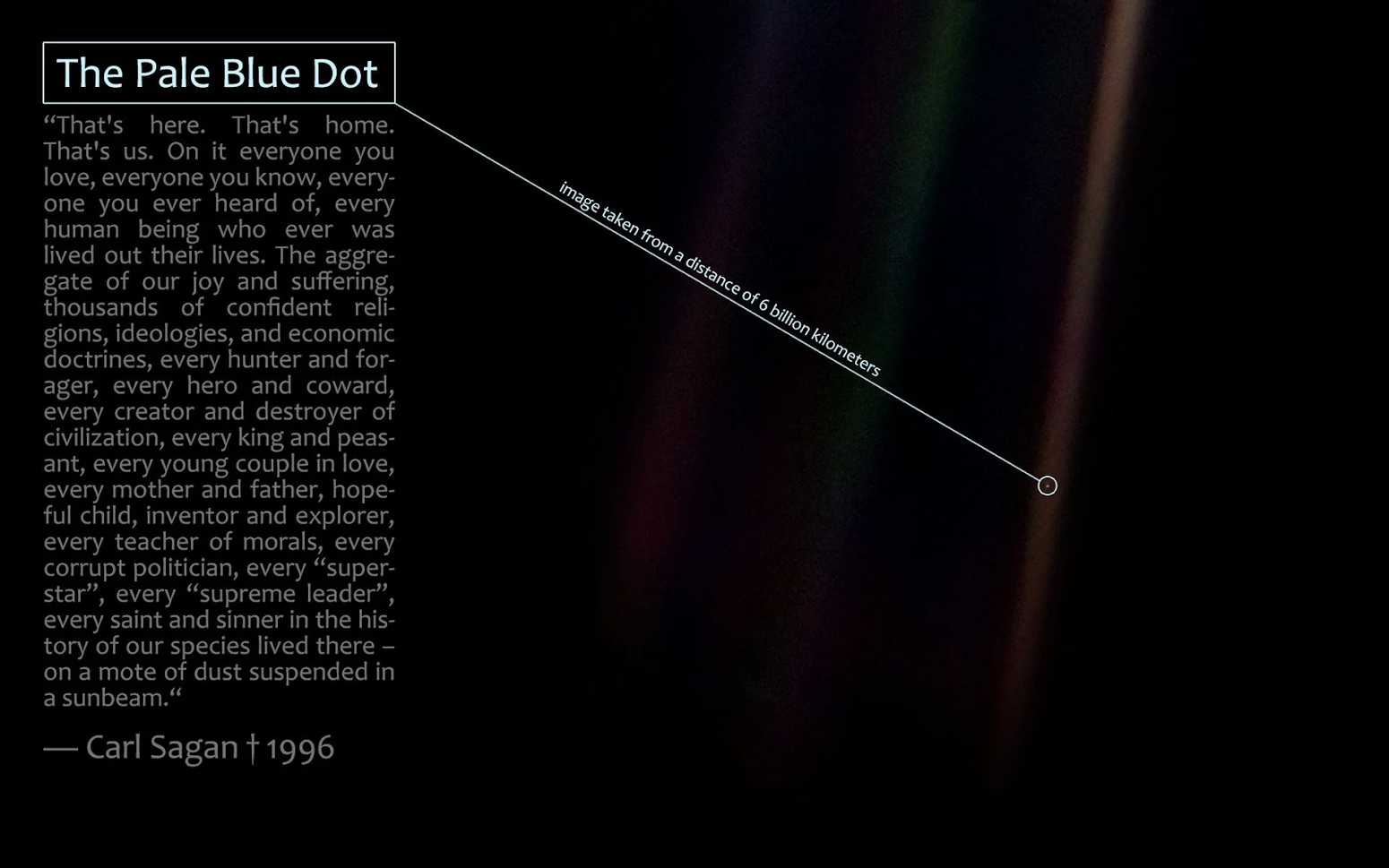
Image Description: Earth appears as a blue dot in the photograph primarily because of Rayleigh scattering of sunlight in its atmosphere. In Earth's air, short-wavelength visible light such as blue light is scattered to a greater extent than longer wavelength light such as red light, which is the reason why the sky appears blue from Earth. (The ocean also contributes to Earth's blueness, but to a lesser degree than scattering.) Earth is a pale blue dot, rather than dark blue, because white light reflected by clouds combines with the scattered blue light.
Earth's reflectance spectrum from the far-ultraviolet to the near-infrared is unlike that of any other observed planet and is partially due to the presence of life on Earth. Rayleigh scattering, which causes Earth's blueness, is enhanced in an atmosphere that does not substantially absorb visible light, unlike, for example, the orange-brown color of Titan, where organic haze particles absorb strongly at blue visible wavelengths. Earth's plentiful atmospheric oxygen, which is produced by photosynthetic life forms, oxidizes organics in the atmosphere and converts them to water and carbon dioxide, causing the atmosphere to be transparent to visible light and allowing for substantial Rayleigh scattering and hence stronger reflectance of blue light.
Current Status
At the moment Voyager 1 has traveled beyond the solar system and with a speed of about 17 km/s it is at a distance of 24.3 billion km. It is currently in the constellation of Ophiuchus, at a distance of 24,329,546,822 kilometers from Earth. The current Right Ascension of Voyager 1 is 17h 15m 55s and the Declination is +12° 21' 54” (topocentric coordinates computed for the selected location: Greenwich, United Kingdom).
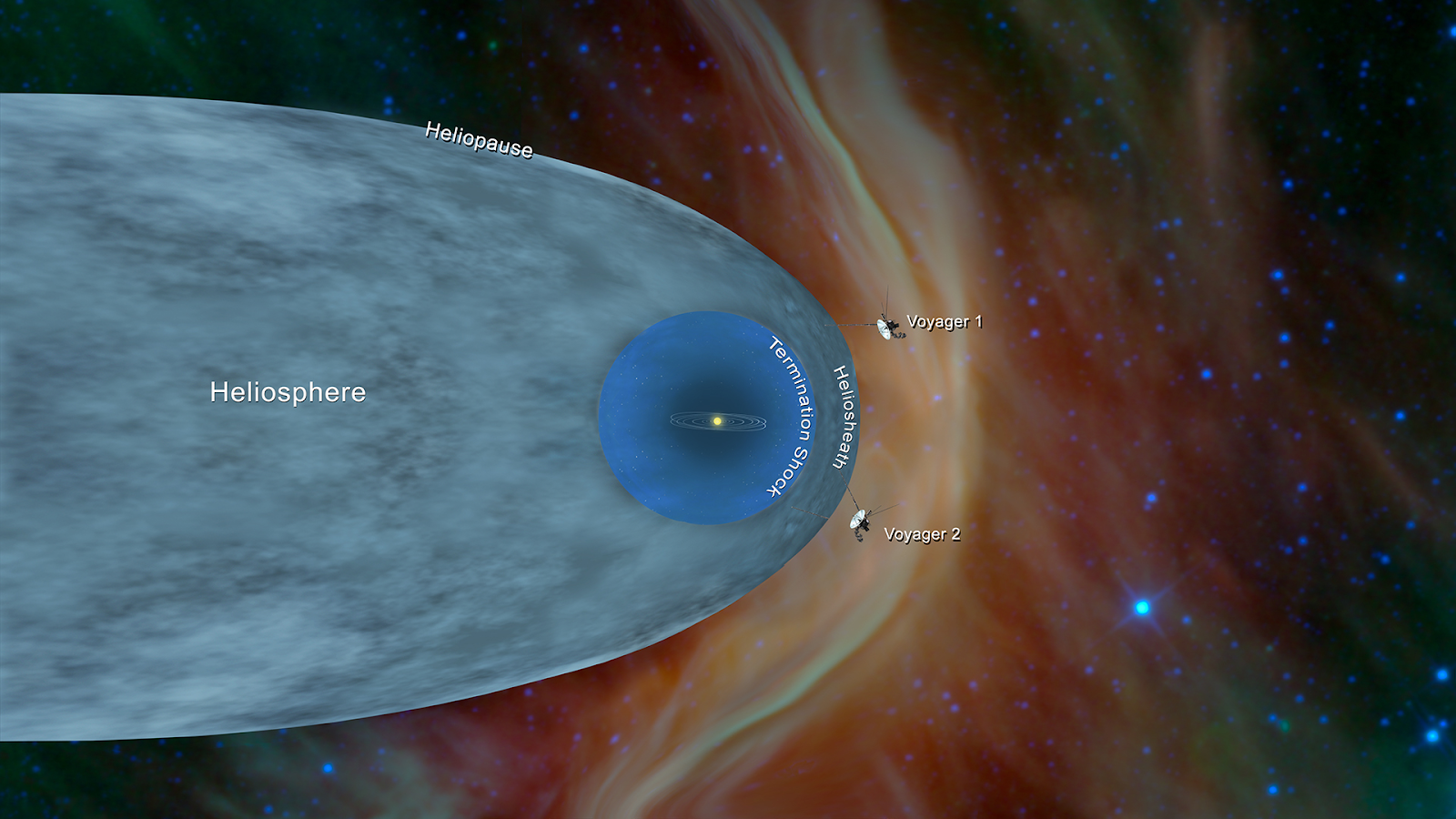
The Golden Record
This record is sort of a universal messenger for humanity so that in the future if it is received by aliens they can know about our existence. Although neither Voyager spacecraft is heading toward any particular star, Voyager 1 will pass within 1.6 light-years' distance of the star Gliese 445, currently in the constellation Camelopardalis, in about 40,000 years
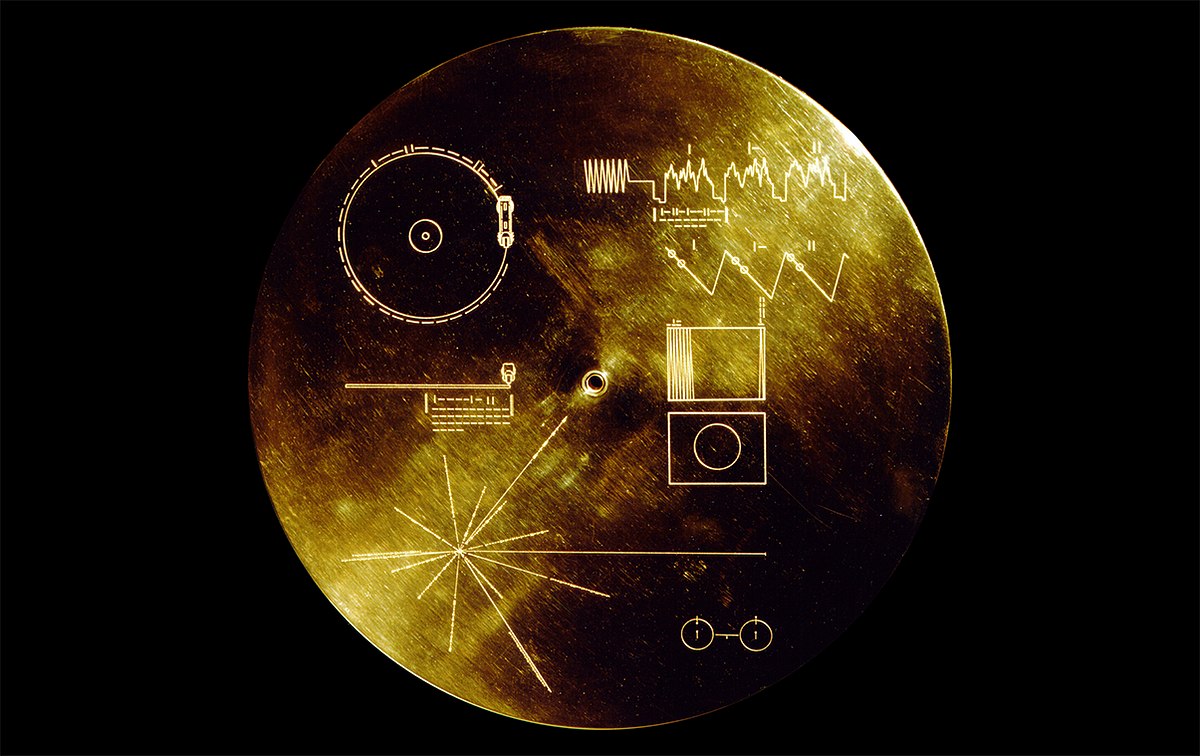
Contents: The contents of the record were selected for NASA by a committee chaired by Carl Sagan of Cornell University. The selection of content for the record took almost a year. Sagan and his associates assembled 116 images (one used for calibration) and a variety of natural sounds, such as those made by surf, wind, thunder and animals (including the songs of birds and whales). To this they added audio content to represent humanity: spoken greetings in 55 ancient and modern languages, including a spoken greeting in English by U.N. Secretary-General Kurt Waldheim and a greeting by Sagan's six-year-old son, Nick; other human sounds, like footsteps and laughter (Sagan's); the inspirational message Per aspera ad astra in Morse code; and musical selections from different cultures and eras. The record also includes a printed message from U.S. president Jimmy Carter.
Conclusion
Voyager 1 has gone from giving us a historic image to going past the solar system and becoming the first object created by humanity to do so, it has also provided us with a nihilistic perspective and shown us how little and insignificant we are in this vast comic play but hopefully our universal messenger will be received by someone out there in the near future thinking the same about outer life among trillions of planets.

Cosmox Blogs
A non profit organization that works on writing and delivering blogs on cosmology, natural sciences & environment, so that people can learn more about it. We even run a forums page, where our users interacts with each other and discuss about Cosmology, Natural Sciences & Astronomy. We even run an instagram and a youtube channel with podcasts.